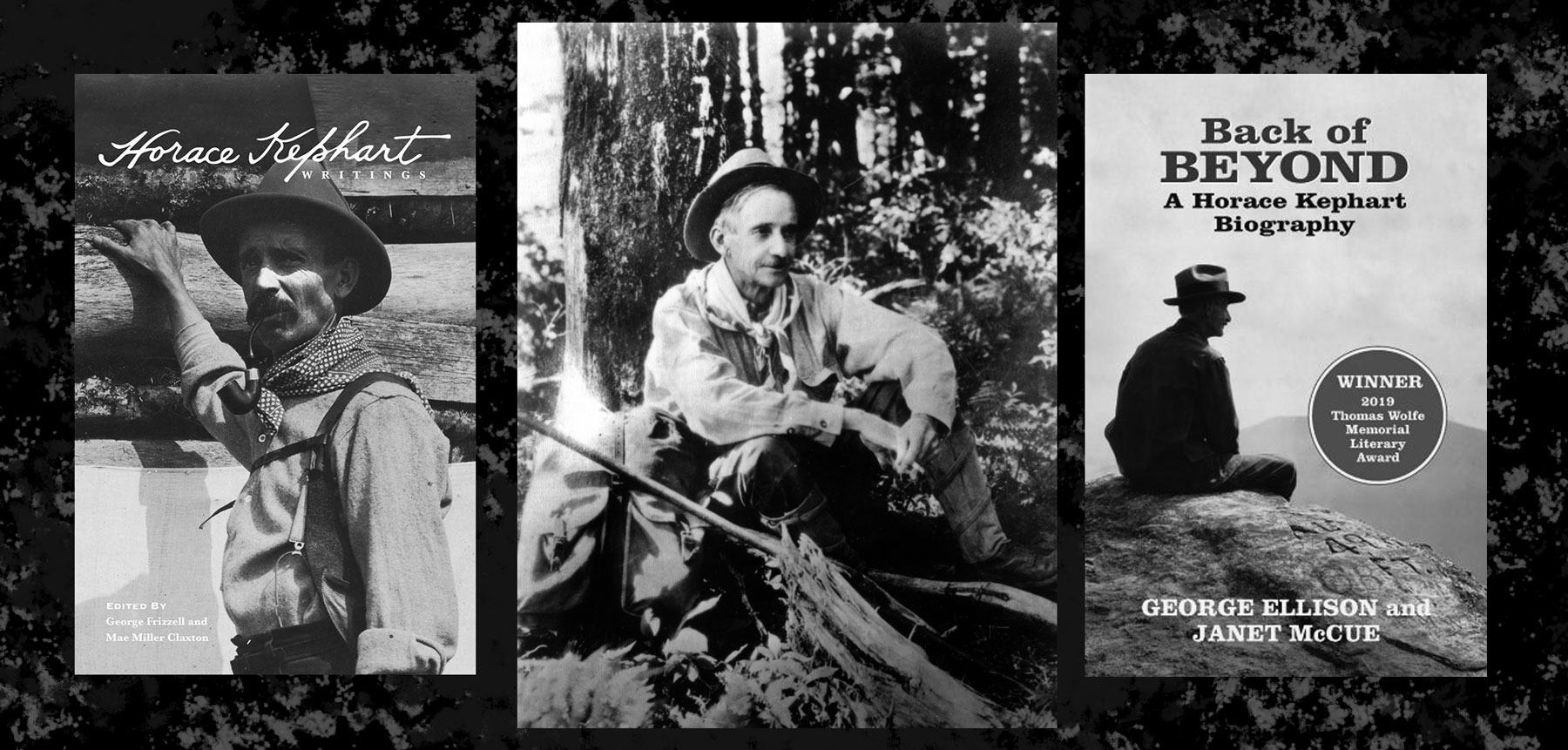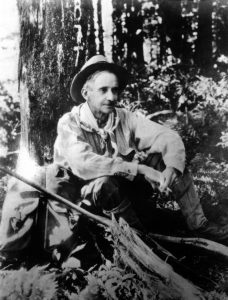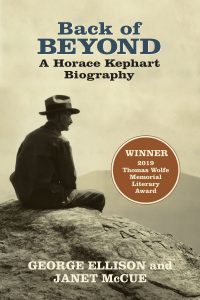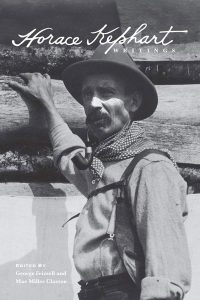

In early 2009, during the 75th anniversary of the establishment of Great Smoky Mountains National Park, Libby Kephart Hargrave, the great-granddaughter of noted Smoky Mountain writer Horace Kephart, offered a complete manuscript of an unpublished novel, written in the 1920s by her ancestor, to the director of Smokies Life for possible publication. The novel, entitled Smoky Mountain Magic, was published by the association in the middle of that year and became available to the public. Its publication during the 75th anniversary was auspicious since Horace Kephart had worked diligently for the establishment of the national park in the Smokies, and the belated publication of Smoky Mountain Magic, his one and only full-length novel, essentially completed his major works.
Kephart, a former distinguished librarian in St. Louis, Missouri, came to the pre-national park Smokies in 1904 after a series of personal and professional setbacks, and he lived the last quarter century of his life among the mountaineers of the Carolina Smokies. He settled down in a boarding house in Bryson City, North Carolina, living there as a writer until his death in an automobile crash in April 1931. In addition to his novel Smoky Mountain Magic, Kephart wrote several non-fiction books, two of which—Camping and Woodcraft (1906) and Our Southern Highlanders (1913)—are still in print today, over a century after their initial publications. He also wrote dozens of magazine articles, essays, and booklets about the outdoor life and the Smokies from an office overlooking the Tuckaseegee River in his adoptive hometown, ultimately earning him the sobriquet of “Dean of American Camping.”

Hargrave’s fortuitous submission of her great-grandfather’s novel for publication in 2009 essentially ushered in a decade-long renaissance of new media about her ancestor’s life and literary works, including the production of her own comprehensive DVD documentary released in 2017 entitled An American Legend—Horace Kephart, His Life and Legacy. For several decades prior to Hargrave’s biographical documentary, the published interpretation of Horace Kephart’s literary and personal life had generally been in the form of two biographical introductions by the late George Ellison and Jim Casada in two University of Tennessee Press facsimile reprints of Camping and Woodcraft and Our Southern Highlanders. Both Ellison and Casada’s biographical sketches are excellent, but due to space limitations the full range of Kephart’s life couldn’t be fully explored.
Continuing the revival in Horace Kephart’s works, in 2019 the first full-length biography in book form about Horace Kephart’s life was published by Smokies Life under the title of Back of Beyond: A Horace Kephart Biography. Written by the aforementioned George Ellison and librarian Janet McCue—who together penned an introduction to the 2011 Smokies Life reprint of Camping and Woodcraft—the full biography provides a detailed examination not only of Horace Kephart but also his wife, Laura, and their children. It is an important document in the story of Horace Kephart and won the prestigious Thomas Wolfe Memorial Literary Award.

Complementing Ellison and McCue’s biography is the 2020 publication of previously unpublished writings by Horace Kephart in an excellent book entitled Horace Kephart: Writings, edited and introduced by George Frizzell and Mae Miller Claxton of Western Carolina University. Frizzell and Claxton say in their introduction that they wanted to show the wide range of Horace Kephart’s life-long writings, not just his well-known books. In that regard they “edited the letters, articles, unpublished manuscripts, photographs, and many other texts demonstrating Kephart’s proficiency as an outdoor writer and advocate for Great Smoky Mountains National Park.” In that endeavor they succeeded mightily.
Their edited work is a truly compelling compilation of Kephart writings drawn from the span of his entire life, many of which are not well known. The book includes notable chapters titled “Camping and Woodcraft,” “Guns,” “Southern Appalachian Culture,” “Fiction,” “Scouting,” “Park and Trail,” and “Family and Friends,” with chapter introductions written by Frizzell, Claxton, and other Kephart scholars. An important component of the edited work is Frizzell’s comprehensive bibliography of Horace Kephart’s published writings. Also included is Kephart’s revealing autobiographical piece entitled “Horace Kephart, By Himself,” first published in 1922 in the North Carolina Library Bulletin. Frizzell and Claxton also include a little-known 1959 essay entitled “Horace Kephart, A Personal Glimpse” by Clarence Miller, a librarian friend of Kephart from his St. Louis days.
Frizzell and Claxton relate that Horace Kephart’s widow, Laura Mack Kephart, once described her late husband as an intellectual with a formidable knowledge of many subjects. They quote her as saying that her husband was “a student, first, last, and always.” In Horace Kephart: Writings, Frizzell and Claxton show just how true her statement is.
Horace Kephart: Writings is an excellent addition to the previous books on the subject and serves as a particularly valuable companion to Ellison and McCue’s full-length biography. Back of Beyond is available in the Smokies Life web store and in all bookstores in Great Smoky Mountains National Park.
Subscribe to get the latest posts sent to your email.
The Great Smokies Welcome Center is located on U.S. 321 in Townsend, TN, 2 miles from the west entrance to Great Smoky Mountains National Park. Visitors can get information about things to see and do in and around the national park and shop from a wide selection of books, gifts, and other Smokies merchandise. Daily, weekly, and annual parking tags for the national park are also available.